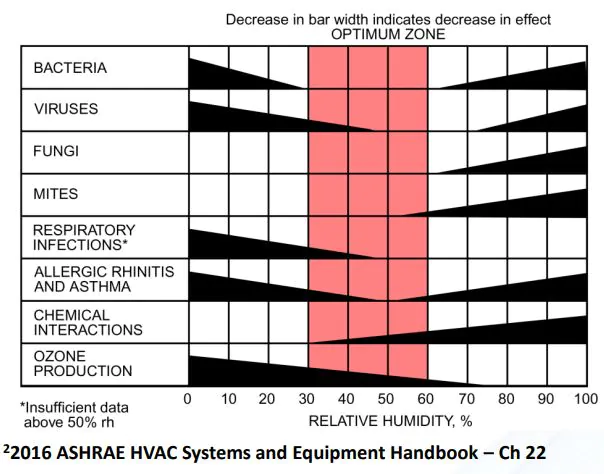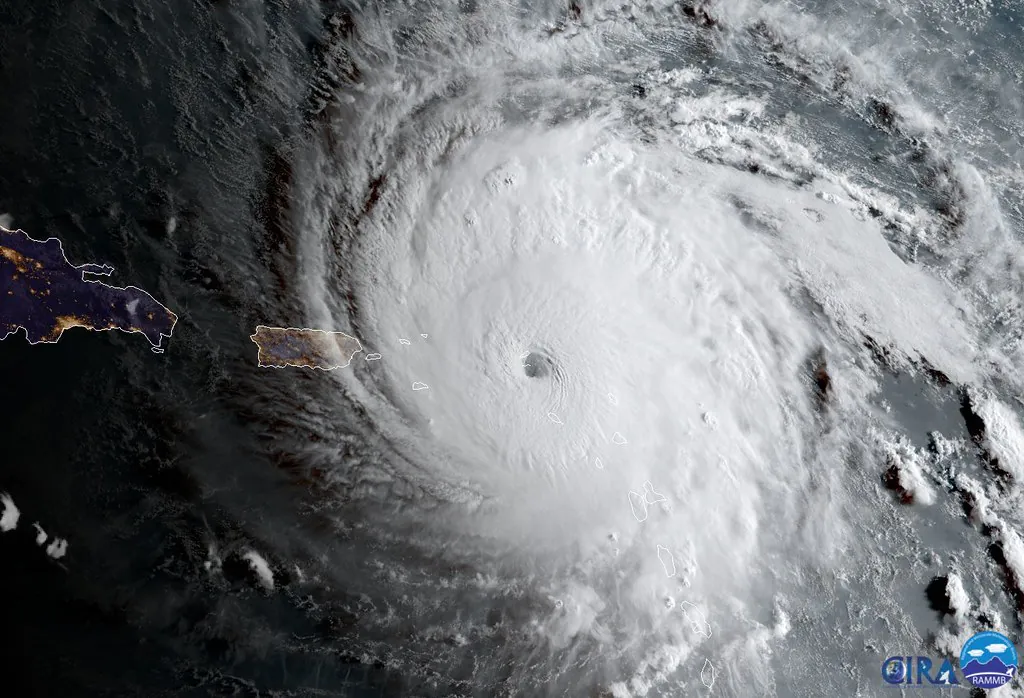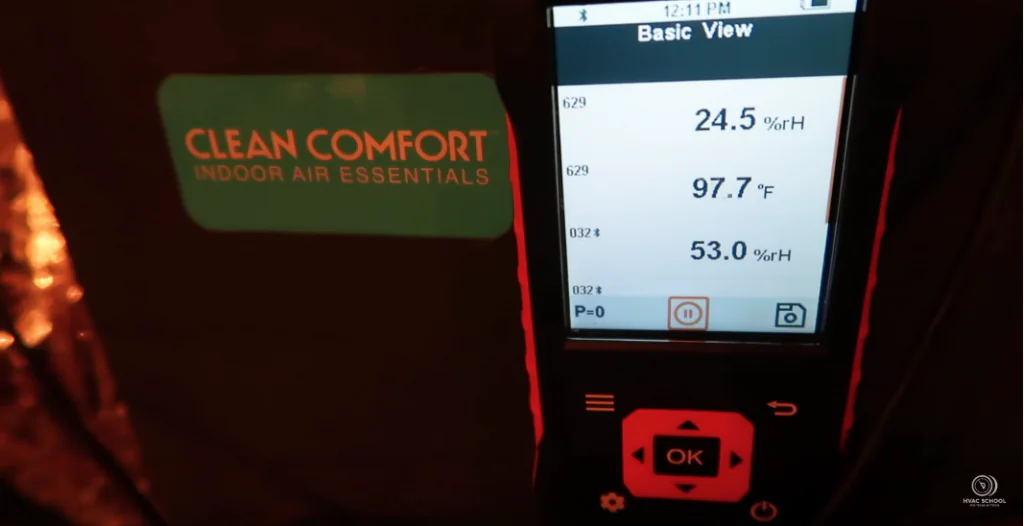Our homes are the last places where we’d expect to feel clammy and gross. However, with Florida’s swampy climate and our need to cool our homes, it can be a real problem. Not to mention, mold and mites thrive in moist conditions. Nobody wants those in their home, but we can control those if we commit to reducing indoor humidity.
When HVAC contractors set humidity goals, we do it in terms of relative humidity. Relative humidity (RH) is a ratio of moisture to the temperature, with 100% RH indicating total saturation. We call that the “dew point,” and that’s when condensation starts to form on surfaces.
So, what is a good humidity range to shoot for? Overall, 30-60% RH is pretty standard. In Florida, we like to shoot for 50-55% RH when possible. As you can see on the graph below, the 50% area is one of the lowest-risk zones for bacteria, viruses, and fungi.

The goal of maintaining humidity is to create a safe, comfortable environment. Unfortunately, there is quite a bit of misinformation on the topic. We’re going to go over the truths and myths of indoor humidity. Hopefully, the facts will help you determine what you can do to control the humidity in your home.
Table of Contents
Causes of High Indoor Relative Humidity
- Low heat load
- Short A/C run-time
- Oversized A/C system
- Humidity entering the home
- Humidity being generated inside the home
- Poor or no spot ventilation in kitchens and bathrooms
- Insufficient total dehumidification capacity
- Low space temperature
- Relying on the A/C alone to dehumidify
Overall, total humidity drops when you pull out more water than you put in. It increases when more moisture enters the space than you pull out. All of the items above result in more moisture entering the space than being pulled out.
Now that we know how humidity increases in our homes, let’s address the facts and myths about controlling indoor humidity.
Myth = Just get it colder in the space to reduce humidity
Truth = Lower temperature alone leads to higher relative humidity
A conditioned space gets dehumidified when the evaporator coil runs below the dew point. Then, the water leaves the drain pan and goes out the drain. The removal of this water is called latent heat removal, as it takes latent heat to evaporate the water.
Latent heat is heat that you don’t feel; instead of affecting the temperature, latent heat contributes to changing a liquid to a gas, solid to liquid, etc. Latent heat removal is our friend when we are looking to drop the RH% in a space.
The cooling that we feel is called “sensible cooling.” Sensible cooling decreases the space temperature, and while this is a necessary part of comfort in most seasons, it is the enemy when it comes to dropping indoor RH%.
When air is cooled without being dehumidified, the relative humidity in the space actually INCREASES because the lower the temperature, the less water vapor the air can contain before turning into liquid water.
When we dehumidify with cooling equipment, it is the water leaving the drain that matters (latent heat removal), not dropping the temperature of the space (sensible).
For dehumidification, getting water out (latent heat removal) = good
Dropping room temperature (sensible heat removal) = bad
Myth = Add more insulation to drop the humidity
Truth = Adding insulation will decrease the heat load and generally increase the relative humidity
For an air conditioner to pull out humidity and drip it down the drain, it needs to run. It needs to be warm enough in the space for it to run.
When you add typical insulation to the ceiling, floors, and walls, you decrease the heat load without changing the humidity load. That will result in the RH% going up.
Some insulation materials, such as closed-cell foam, will also act as an air & vapor barrier, helping to block moisture from making it in. That can help reduce humidity, but it is the air/vapor barrier portions that do it, not the insulation.
Myth = If humidity is high, it’s the air conditioner
Truth = Many humidity issues are caused by abnormally high moisture, not the A/C
The air conditioner needs to be properly sized and selected with sensible and latent capacity that matches the building design. There are many cases where homes aren’t built or lived in exactly to design. We also see plenty of cases where the weather doesn’t act as the models predict.

In Florida, we have a lot of hurricanes and tropical systems (you may remember Irma from 2017, pictured above). In these cases, we get high winds that create a large pressure differential across our homes and force it in. On top of that, we get low sensible temperatures, so the A/C doesn’t run much, and power outages can keep it from running for days. Of course, tropical systems also bring in immense amounts of moisture.
For months afterward, owners will complain of condensation, mold growth, high relative humidity, etc. Many homeowners try to “solve” the issue by messing with the A/C. Sadly, your A/C unit can’t do much. Tropical weather events increase the amount of moisture in the home and impact the ability of the equipment to remove the moisture at the same time.
What to Do About High Humidity
Even though you may have to rely on your HVAC technician to make changes to the ducts, A/C system, etc., you can take the following steps to reduce the humidity in your home:
- Use bath vent fans when bathing and showering.
- Use your ventilation hood when boiling water or cooking in the kitchen.
- Don’t leave doors to the outside open (especially if you have a pool).
- Look for roof leaks, proper grading around the home, ponding water, etc., and have any issues taken care of.
- Ask your local HVAC company to send somebody out to assess the home. They may check if your A/C equipment is oversized, if your ducts are leaking, etc.
- Check seals, sweeps, and weather stripping around doors and windows.
- Ask your HVAC technician about whole-home dehumidification.
- Don’t reduce the temperature to decrease humidity.






